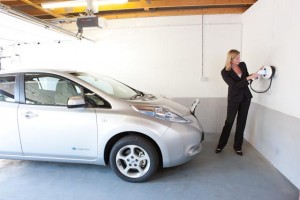The California State Department of Housing and Community Development (HCD) issued proposed new building code standards last month that vastly promotes electric vehicle charging infrastructure in new home construction. It’s much more costly to wire a home for “Level 2” or 240V charging once it’s already built, while relatively cheap to do it when the house is already under construction:
The new code will ensure that the conduit and service panel capacity is already there, making installation a simple matter of running wires and bolting charging stations into place. By one estimate, the average cost of compliance will be around $50, a fraction of the potential savings to residents who choose to install charging stations. For one- and two-family dwellings, the service panel must have capacity for a 40-amp circuit (sufficient for a 32-amp charging station), and conduit that can support wiring for an 80-amp circuit.
The new standards also call for parking lots with 100 spaces to have conduit and service panel capacity to wire at least 3 percent of the parking spaces.
This change is welcome news for future EV drivers and home buyers/renters in California. A Level 2 charger offers a lot more convenience than the traditional 110V wall outlet. For example, when I plugged our electric vehicle into a regular wall outlet, the battery charged at about 5 miles an hour (one hour of charge gave me an extra five miles of driving). But after we installed a Level 2 charger, we could get at least 20 miles of range for every hour of charge. It means we never need to worry about the battery being too low and having to make sure to plug in every night before bed.
I hope California’s actions inspire other states, as the country moves to electrify passenger vehicles at an increasing rate.
Leave a Reply
You must be logged in to post a comment.


